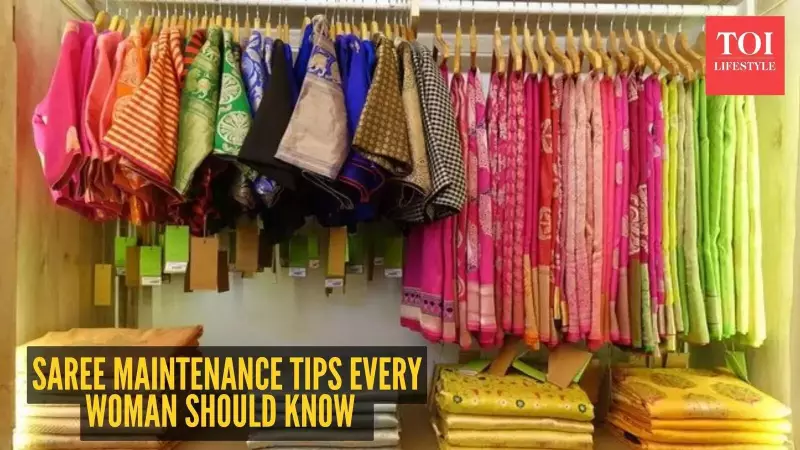
The official 2025 wedding season is in full swing, and fashion-conscious individuals across India are proudly showcasing their most exquisite saree collections. These elegant drapes, often carrying significant price tags, represent more than just clothing—they're valuable investments that demand meticulous care long after the wedding festivities conclude.
While many immediately seek professional help for saree maintenance, numerous essential preservation techniques can be successfully implemented at home. Proper care ensures your cherished sarees remain as vibrant and beautiful as the day you purchased them, ready to be worn for future celebrations.
Fabric-Specific Saree Care Instructions
Understanding that different fabrics require unique handling approaches forms the foundation of effective saree preservation. Each material possesses distinct characteristics that dictate its care regimen.
Silk sarees demand storage in breathable fabric bags away from moisture. Always ensure they're completely dry before storage to prevent damage. Cotton sarees, known for color bleeding, must be washed separately in cold water to maintain their appearance.
Chiffon and georgette sarees, despite their delicate appearance, require specific handling—always dry them flat to preserve their flowy shape and hand-wash with gentle detergent. For Kanjeevaram and Banarasi silk sarees, which represent premium investments, avoid prolonged hanging to prevent fabric weakening and consider professional cleaning services.
Long-Term Saree Preservation Strategies
Implementing proper long-term maintenance can help your sarees withstand the test of time, potentially lasting for generations while retaining their original beauty and value.
Incorporate natural insect repellents like neem leaves or dried cloves within your storage area. Monthly rotation of your saree collection prevents permanent crease formation from prolonged folding. While this might seem tedious, this simple practice significantly maintains the drape's appearance.
Place silica gel sachets in your storage space to absorb excess moisture and deter insects. Crucially, avoid airtight plastic covers that trap humidity and cause gradual fabric deterioration. Instead, opt for high-quality cloth bags specifically designed for saree storage.
Practical Saree Maintenance Techniques
Proper cleaning methods vary significantly across different saree types. Always review care instructions before purchasing, as this knowledge proves invaluable for long-term maintenance.
For heavy or embroidered sarees like silk and velvet varieties, dry cleaning remains the safest option. Lightweight cotton and synthetic sarees can be gently hand-washed in cold water using mild detergent, avoiding harsh wringing that damages fabric integrity.
Stain removal requires immediate attention and appropriate techniques. For oil-based stains, sprinkle talcum powder and gently brush it off. With food stains, never rub—instead, blot with a clean cloth and use mild soap if necessary. When applying perfumes and deodorants, spray them on your skin rather than directly onto the saree fabric to prevent discoloration.
Ironing and Storage Best Practices
Correct ironing techniques preserve your saree's beauty and longevity. Always use appropriate temperature settings based on fabric type—low heat for delicate materials like silk and georgette, medium heat for cotton varieties.
Fold your drapes neatly along their natural creases to maintain original shape. For storage, use cloth bags with tissue paper between layers to minimize friction damage. This simple step prevents unnecessary wear and tear during storage periods.
Remember that your premium sarees differ significantly from everyday ethnic wear and require corresponding care levels. Whether you've invested in luxurious silk or comfortable cotton, proper upkeep proves equally important as the initial purchase. By implementing these expert techniques, you ensure your valuable saree collection remains elegant and timeless for years to come.





